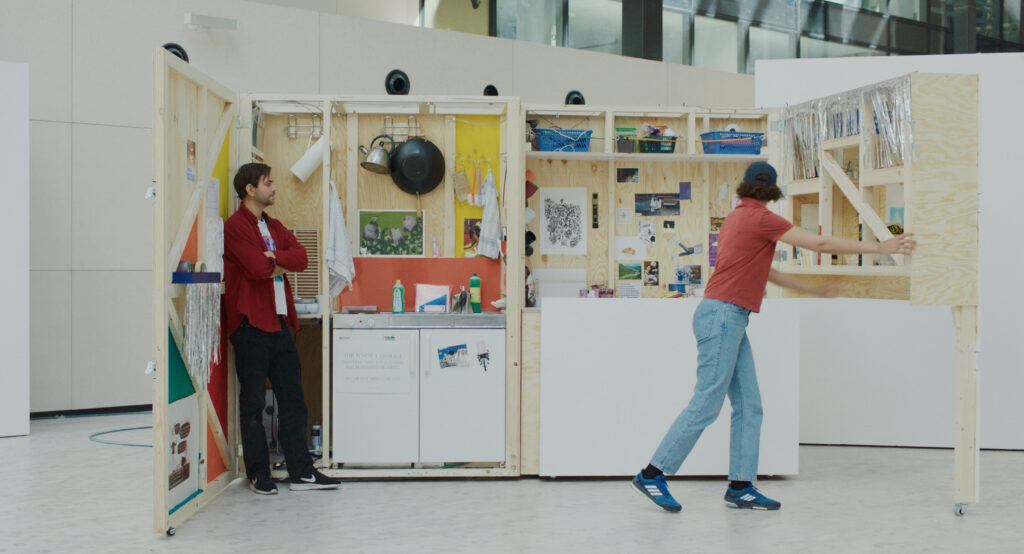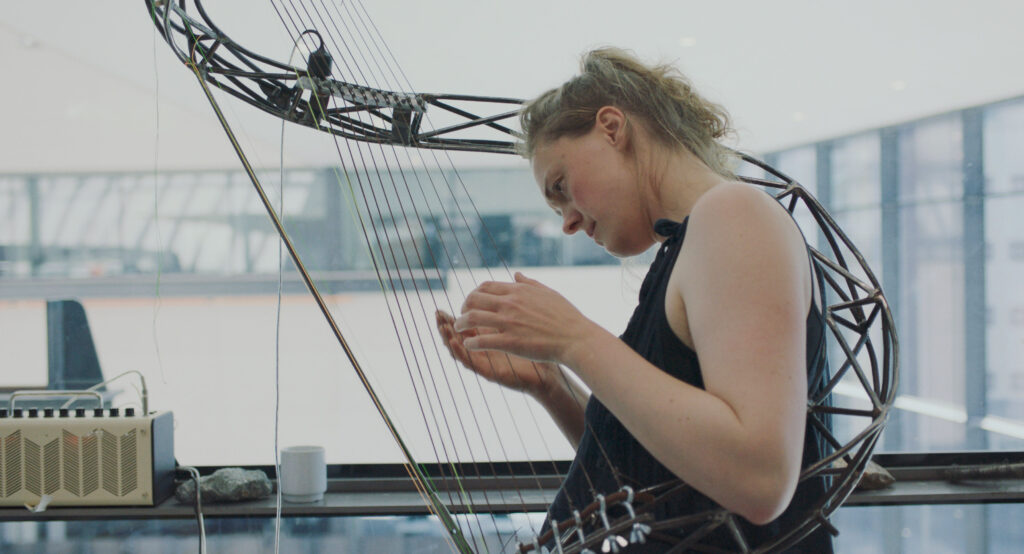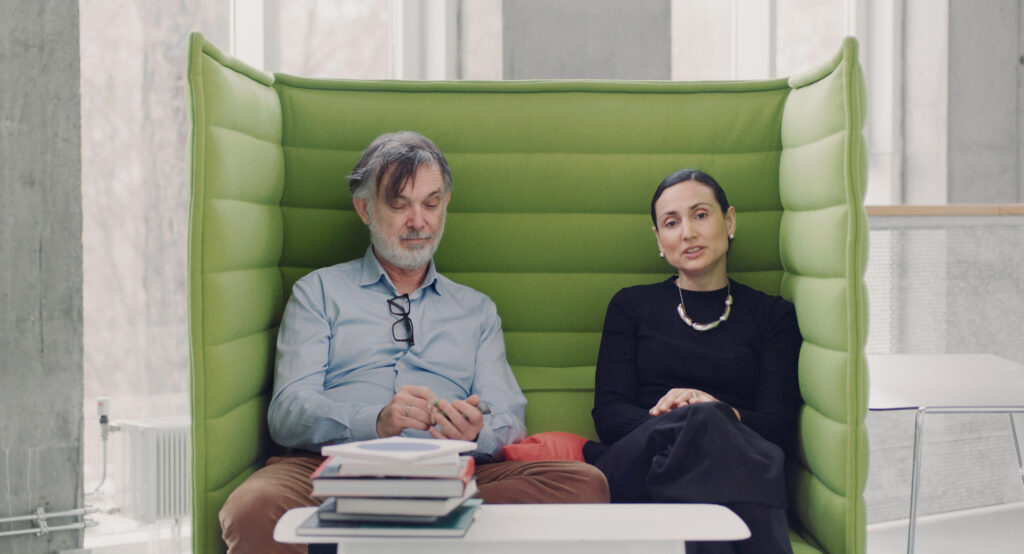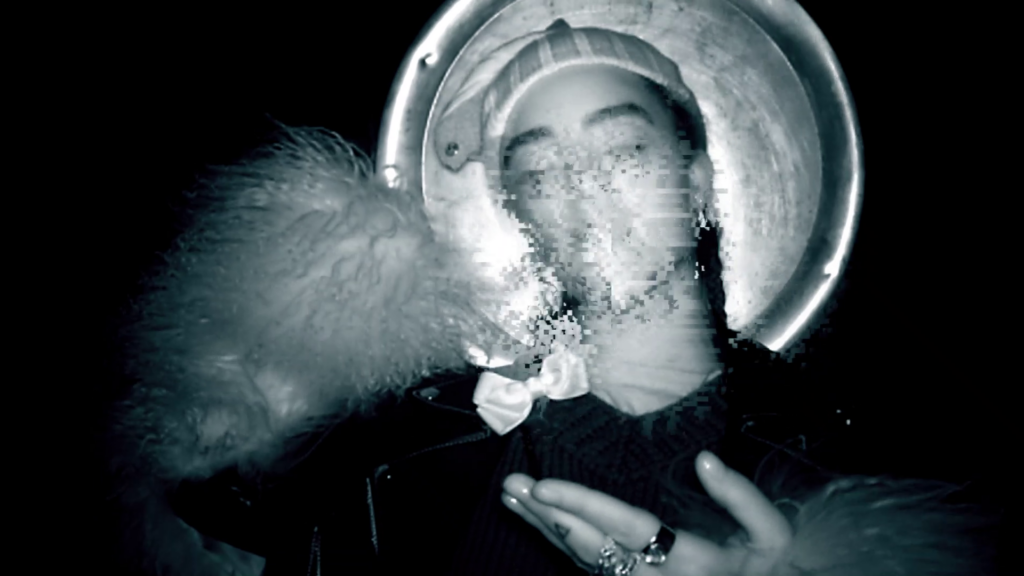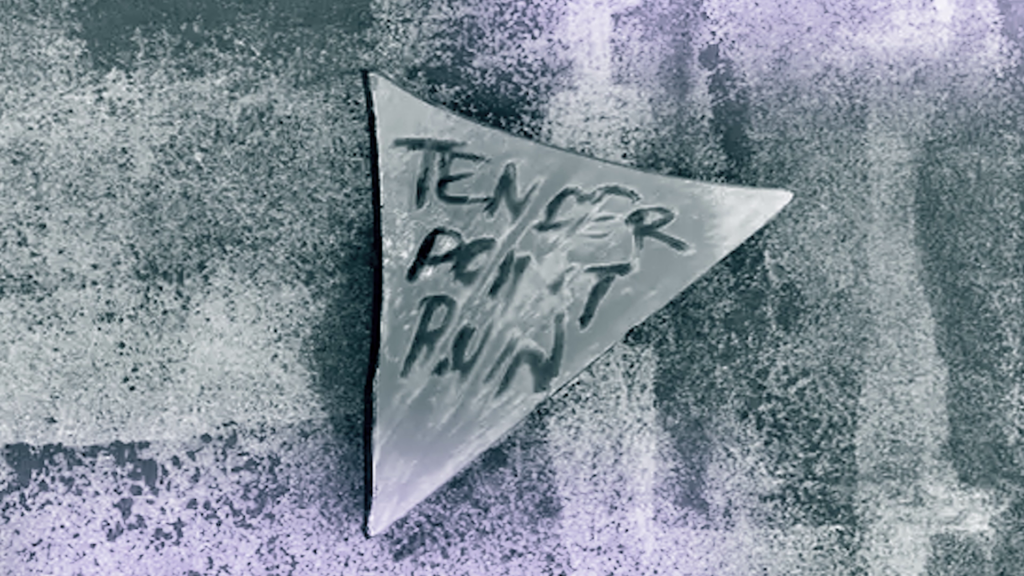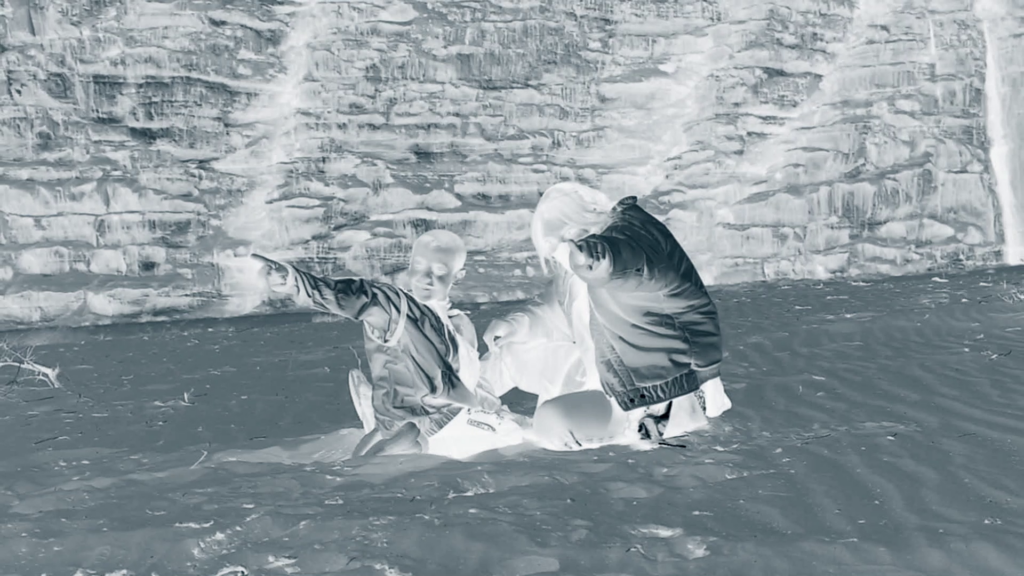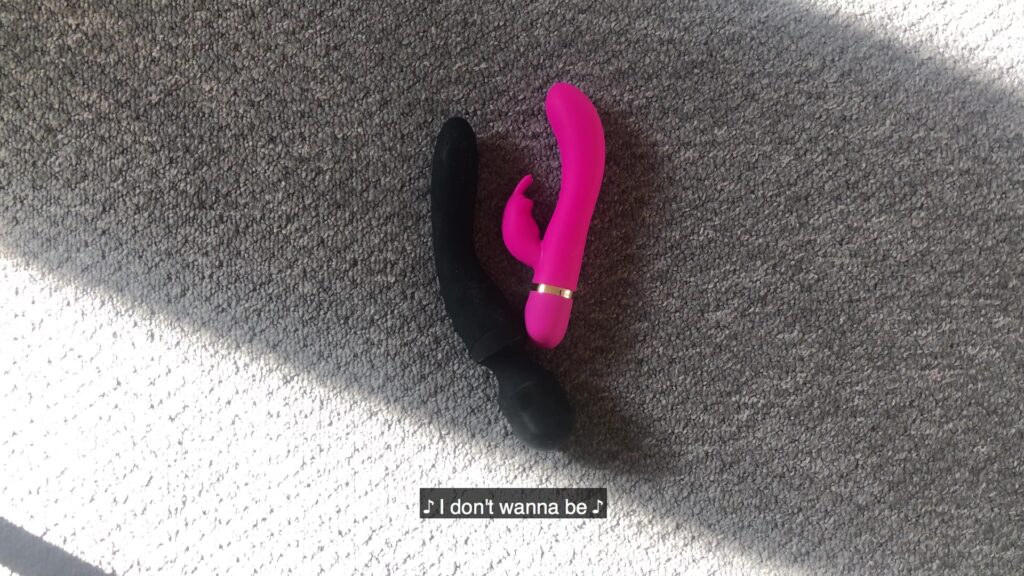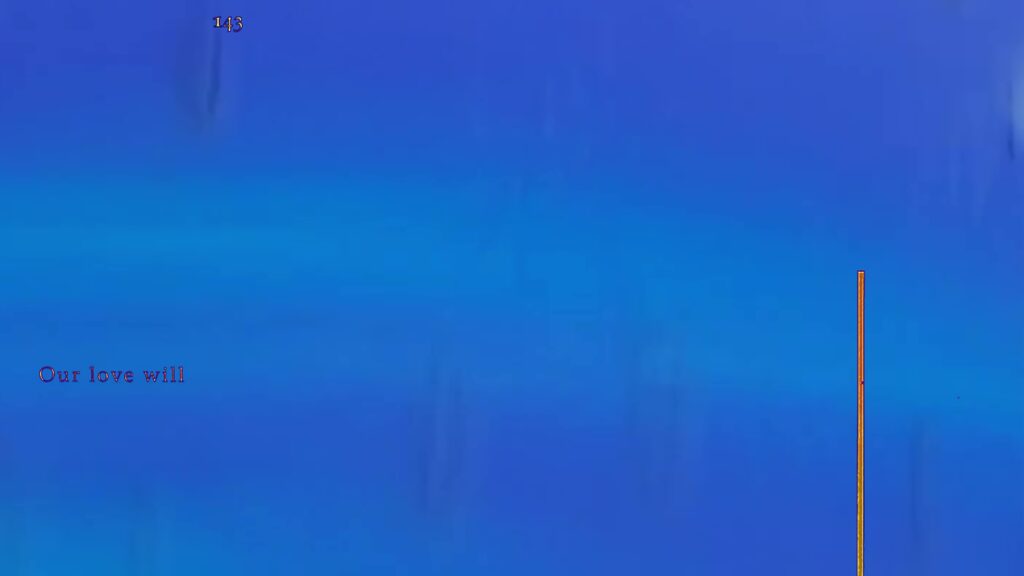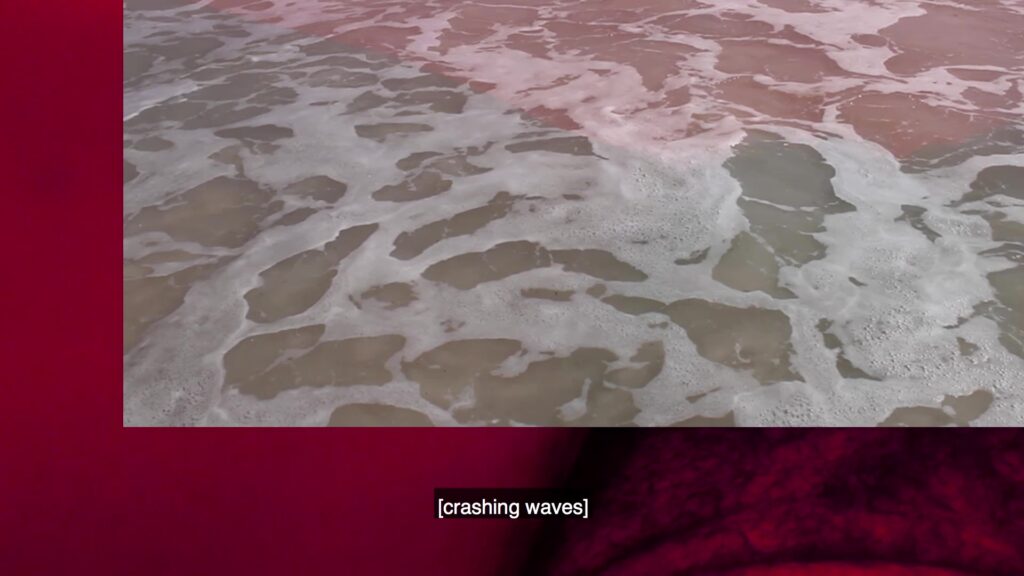How do we make and remake ourselves? The body of Tender Point Ruin unravels through a series of aural and textual encounters. Beginning with the rogue test (a behavioural experiment using mirrors and make up from the 70s, which mapped how self recognition develops in young children) and ending with a conversation with her frequent collaborator drag performance artist Sin Wai Kin.
In many ways, the film is a companion piece to her recent video work Beast Type Song, in which she began to explore her profound loss of faith in the written form. In Tender Point Ruin, Al-Maria returns to many of the same references and texts. An essay written to reject speechlessness by Jamaican-American writer Michelle Cliff entitled Caliban’s Daughter is this time recited by American artist Kelsey Lu. Etel Adnan, whose epic 1989 poem The Arab Apocalypse, so foundational to Beast Type Song, is here cast in the role of the poet. Her gravelly voice accompanies images of the moon as she tells us of the recurring images of desolate lovers in Arabic poetry, their yearning telling us of the “tender point of a ruin.” In between, we see Umm Kulthum, the iconic Egyptian singer’s only 1970 performance in Paris, performing Al-Atlal. Describing heartbreak, the song was originally a poem by Ibrahim Nagi and its title translates as ‘the ruins’.
In a text exchange in Tender Point Ruin, Al Maria asks “wtf is the point of art?”—gesturing to the inevitability of ruination when in love with something that cannot love you back. But like the poetry that finally shores up her faith in language, the artist’s CGI renderings of future landscapes turn technologies of hyper-vigilance into spiritual openings. Cameras and pineal eyes become composite and night vision cameras give way to another world that invites us to enter into the spaces between the ruins, to wander and discover, and to reach for the moon. —Jemma Desai
